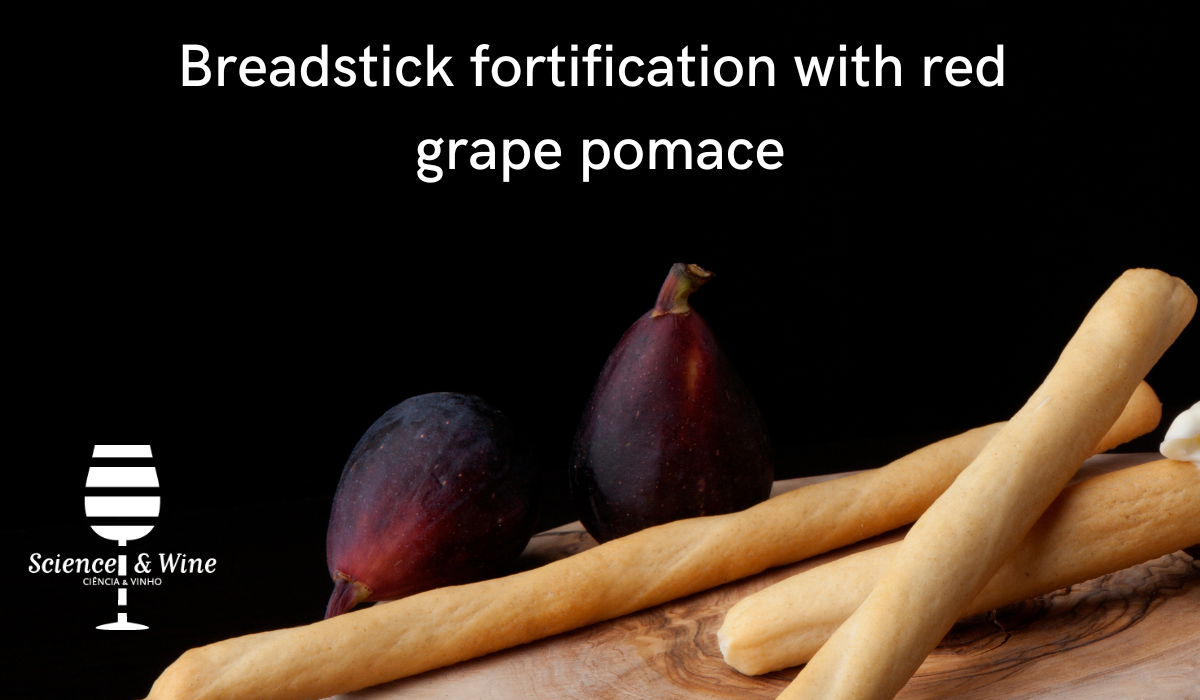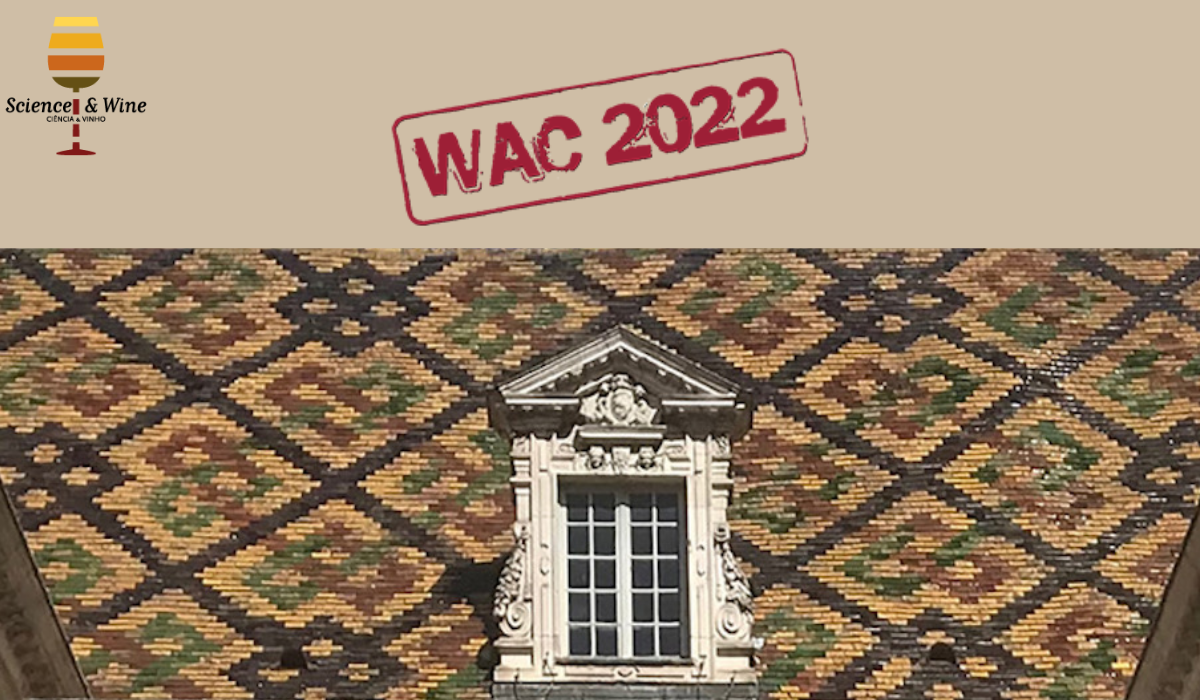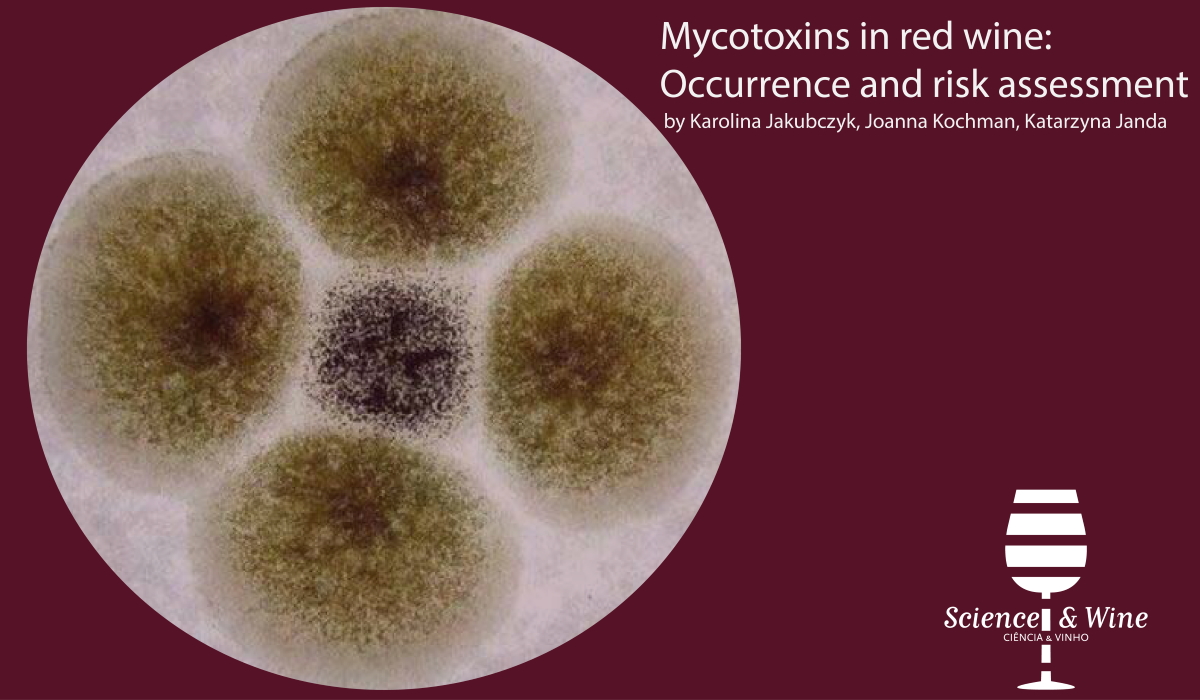Vine leaves, which are produced fresh, brined or fermented from the leaves of Vitis Vinifera in Türkiye are an important food. Sulfur is used as a pesticide and sulfur compounds can be used as additives during the growing and processing of the vine leaves. These sulfur sources cause positive results on carbon disulfide (CS2) measurements by GC-MS. Therefore, the main objective of the present study was to investigate the effects of residues of sulfur or sulfur compounds on dithiocarbamate analysis methods based on CS2 measurement.

Breadstick fortification with red grape pomace: effect on nutritional, technological and sensory properties
Grape pomace, a wine-making by-product rich in dietary fiber and total phenolic compounds, is a potential functional ingredient in the fortification of baked goods. Grape pomace improved the nutritional values of fortified breadsticks and changed the rheology of dough and breadsticks’technological properties without affecting sensory acceptability.

5th Edition of the Wine Active Compounds (WAC) Congress, Dijon 2022
After two successive postponements, the fifth edition of Wine Active Compounds (WAC) 2021 happened in the Palace of the Dukes of Burgundy in Dijon, France, from Wednesday June 29 to Friday July 1, 2022, under the auspices of the UNESCO Chair “Culture & Traditions of Wines” and the Institut Jules Guyot at University of Burgund.

Sustainable green processing of grape pomace using micellar extraction for the production of value-added hygiene cosmetics
This study sought to evaluate the possibility of using grape pomace, a waste material from wine production, for the preparation of cosmetic components. Following the existing clear research trend related to improving the safety of cleansing cosmetics, an attempt was made to determine the possibility of preparing model shower gels based on grape pomace extract. The results obtained showed that the extracts based on waste grape pomace contained a number of valuable cosmetic compounds (e.g., organic acids, phenolic compounds, amino acids and sugars), and the model products basis on them provided colorful and safe natural cosmetics.

Health warning labels on wine bottles and how they influence perceived risk of consumption
Wine is an essential part of European culture. Unfortunately, the consumption of alcohol, such as wine, can have negative health effects. Health warning labels (HWLs) are increasingly presented as a measure to warn consumers of the threat alcohol poses to their health. At present, only a few countries in Europe have introduced mandatory HWLs on wine bottles. This may be due to the cultural and economic significance of wine and the European public’s refusal to accept HWLs on a product like wine. To investigate this issue, the authors conducted an online experiment in the German-speaking part of Switzerland and assessed the perception of risk in participants who were presented wine bottles featuring different types of HWLs. They also studied how health beliefs and cultural worldviews influence the perception and acceptance of HWLs. The study revealed a small effect of HWLs on consumers’ risk perception. There was no difference between a simple text-only HWL and a label featuring a deterring picture (image-and-text HWL). The major determinants of HWL acceptability were cultural worldviews and health beliefs. That is, participants who opposed government intervention for collective wellbeing and espoused a belief in the health benefits of wine were less likely to accept HWLs on wine. More research is needed to assess the effectiveness of HWLs in real-life situations and the importance of culture to the acceptance of such a public intervention measure.

Total faecal proanthocyanidins as intake biomarker? A first exploration
Proanthocyanidins are a class of dietary phenolic compounds, present in foods or beverages such as berries, legumes, wine, cocoa and derived products or nuts. Due to the health benefits associated with proanthocyanidins, it is useful to identify dietary proanthocyanidin biomarkers that can be determined by simple methods. Since increased levels of circulating PA metabolites are associated with increased faecal proanthocyanidin content, this study explores the spectrophotometric measurement of faecal proanthocyanidin content and its use as a biomarker of proanthocyanidin intake.

Red Wine and Longevity
The main conclusions of the study summarized in this post is that the moderate consumption of wine augments the expression of the key genes associated with longevity, such as p53, sirtuin-1, catalase, and superoxide dismutase in humans. Furthermore, it significantly augments the expression of genes associated with longevity, as well as the life span of flies, which shows that the effects apply to the entire animal kingdom. Lastly, no unwanted secondary effects were observed.

Mycotoxins in red wine: Occurrence and risk assessment
Mycological contamination of food products is a common problem in the food industry, associated with implications for consumer health. Red wine is regarded as an alcoholic beverage with health benefits, notably for the circulatory system. However, in spite of its health-promoting properties, it can also be a source of toxic substances. Wine is a documented source of ochratoxin A, which is one of the ubiquitous, highly toxic secondary metabolites produced by filamentous fungi. It is the only mycotoxin for which a regulatory maximum level in wine has been established. There are no legal regulations on the content of other mycotoxins in wine, as a product with an increased risk of mycological contamination, and so their levels are not monitored. The aim of this study was to determine the concentrations of ochratoxin A (OTA), deoxynivalenol (DON) as well as T-2 and HT-2 toxins in dry red wines.

A new drink that reduces brain oxidative stress
Neurodegenerative diseases pose a major health problem for developed countries. This post reports the results of a study aimed to develop a new antioxidant-enriched drink. The authors found that addition of red grape polyphenols and MecobalActive® to grape juice did not provoke changes in juice organoleptic characteristics, and that the pasteurization process did not greatly affect the levels of flavonoids and vitamin B12. Out of all combinations, grape juice with red grape polyphenols was selected by expert judges. In vivo, oral administration of grape juice supplemented with red grape polyphenols exerted an antioxidant effect in the brain of stressed mice reducing two-fold the expression of genes involved in inflammation and oxidation mechanisms and increasing three-fold the expression of genes related to protection against oxidative stress. In addition, authors found that this drink augmented antioxidant enzyme activity, and prevented lipid peroxidation in the brain. The authors propose supporting the use of this drink by the general population as a new and global strategy for the prevention of neurodegeneration.

Anti-hypertensive effects of chronic resveratrol consumption mediated by the improvement of electrophysiological currents and Ca2+ signaling in chromaffin cells from the adrenal gland
Resveratrol (RESV) is one of the most abundant polyphenol-stilbene compounds found in red wine with well-established cardioprotective and antihypertensive effects. Hyperactivity of the sympathoadrenal axis seems to be one of the major contributing factors in the pathogenesis of human essential hypertension. In this study, the long-term RESV treatment prevented the increase of the systolic blood pressure in hypertensive animals, without reversion of cardiac hypertrophy. Data revealed that electrophysiological alterations of the chromaffin cells and in its Ca2+ homeostasis are potential new targets related to the antihypertensive effects of long-term RESV treatment.

